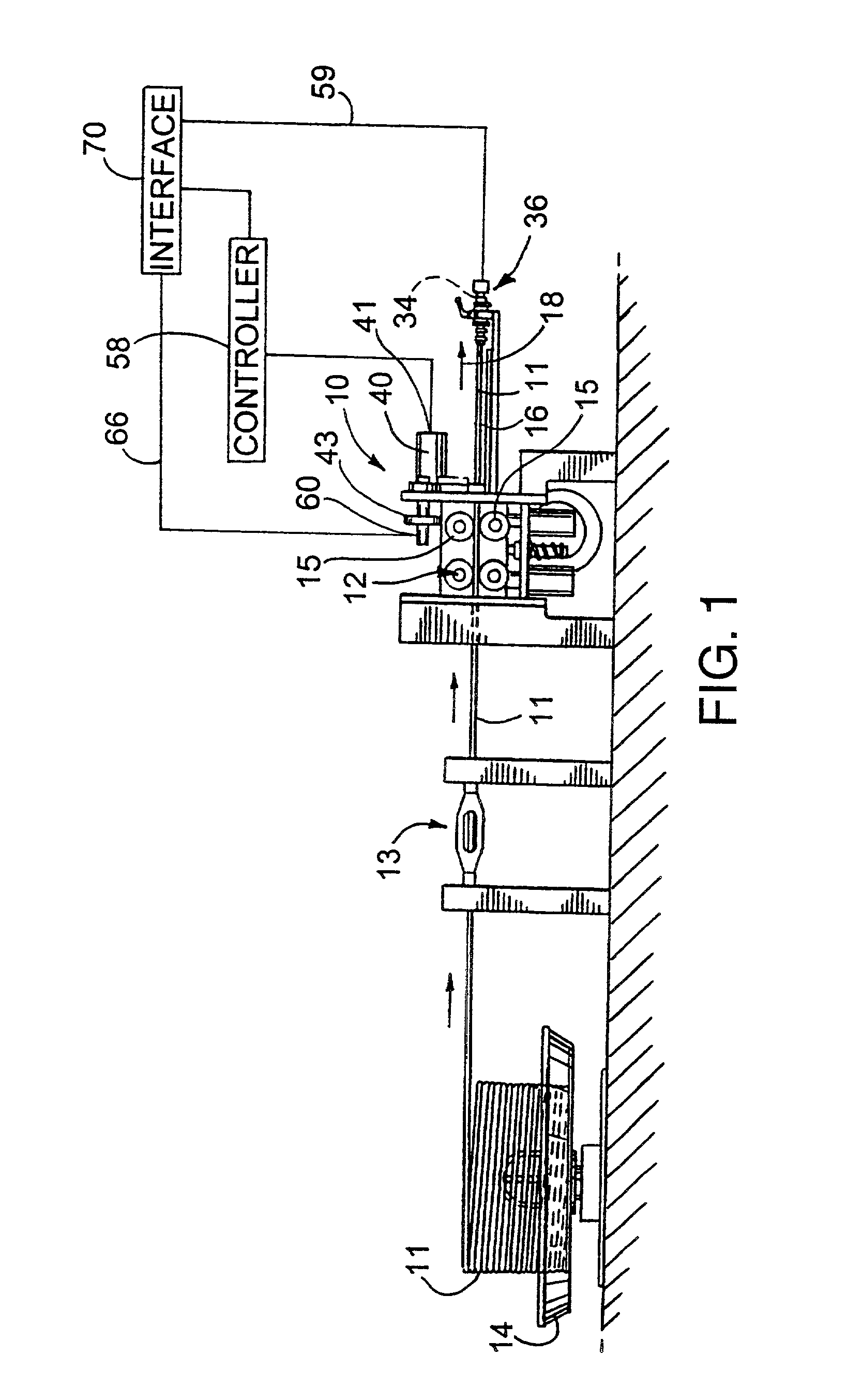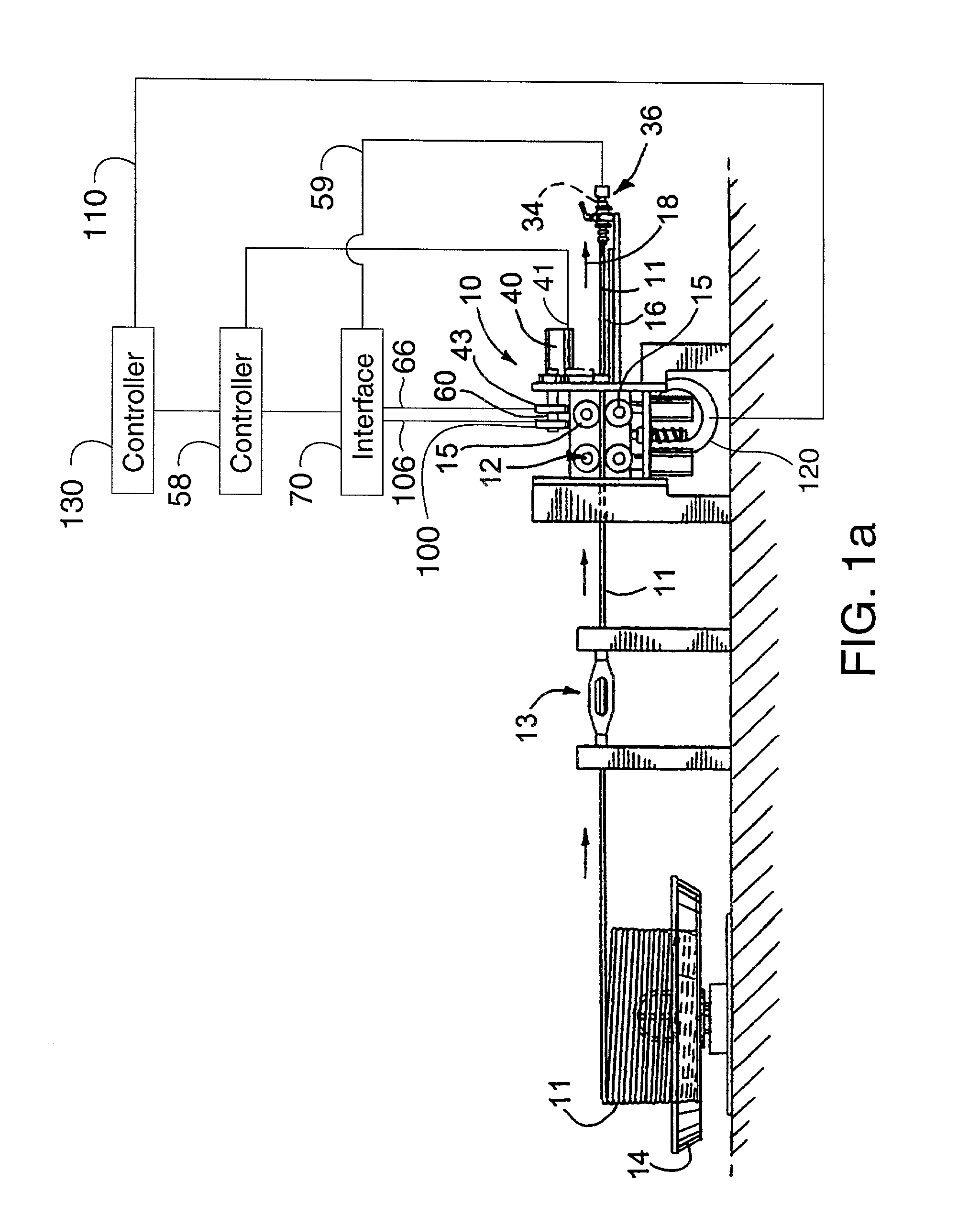Clutchless wire cutting apparatus
- Summary
- Abstract
- Description
- Claims
- Application Information
AI Technical Summary
Benefits of technology
Problems solved by technology
Method used
Image
Examples
first embodiment
[0027] For purposes of illustration and referring to FIG. 1, the present invention has been shown in the drawings as incorporated in a cutting apparatus 10 for cutting off successive leading end portions of an elongated length of wire 11 adapted to be advanced along a predetermined wire path 18 (the wire path being shown schematically in FIG. 1 by arrows above the actual wire path which is occupied by the wire 11 to indicate direction of wire advancement). While the cutting apparatus 10 may be used in many different applications, it herein has been shown in conjunction with a feed mechanism 12 which pulls wire 11 through a wire straightening apparatus 13, that in turn is supplied with wire stock from an unwinding station 14, or from a wire drawing machine.
[0028] In the first embodiment, the feed mechanism 12, the straightening apparatus 13 and the wire supply and unwinding station 14 do not constitute part of the invention. It will suffice to say that the feed mechanism 12 includes ...
second embodiment
[0041] The first additional feature in the second embodiment is a third proximity sensor in the form of a proximity switch 100 that also senses position of the cutter 20 relative to the wire 11 or wire path 18. The proximity switch 100 includes a cam 102 mounted on the cutter shaft 44 and a stationary sensor element 104 to sense the position of the cam 62. The position of the cam 62 correlates to the position of the cutter 20. The cam 102 is offset from the angular position of the cam 62 of the other sensor 60 that also senses position of the cutter shaft 44 and hence the cutter position. In this manner the leading sensor 100 is used to indicate that the cutter shaft 44 and cutter 20 is near to the home position and serves to warn the controller 70 of the same. Once the leading sensor 100 sends a signal (either by sensing the presence or absence of metal of the cam 102 in which an off signal or on signal is provided) to the controller 70 via line 106 indicating the cutter 20 is clos...
PUM
| Property | Measurement | Unit |
|---|---|---|
| Length | aaaaa | aaaaa |
| Frequency | aaaaa | aaaaa |
Abstract
Description
Claims
Application Information
 Login to View More
Login to View More - R&D
- Intellectual Property
- Life Sciences
- Materials
- Tech Scout
- Unparalleled Data Quality
- Higher Quality Content
- 60% Fewer Hallucinations
Browse by: Latest US Patents, China's latest patents, Technical Efficacy Thesaurus, Application Domain, Technology Topic, Popular Technical Reports.
© 2025 PatSnap. All rights reserved.Legal|Privacy policy|Modern Slavery Act Transparency Statement|Sitemap|About US| Contact US: help@patsnap.com



